Last updated on
Discover the safest and most efficient way to pack your kitchen knives for a stress-free move or storage experience.
Packing your kitchen knives for a move or a trip can be a daunting task. You don’t want to damage the blades or risk injuring yourself during transportation.
But fear not, my fellow home decorators! With the right tools and techniques, packing your kitchen knives can be easy and stress-free. In this article, we will guide you through the step-by-step process of how to pack your kitchen knives like a pro.
So grab your favorite chef’s knife and let’s get started!
What's Inside
Choose the Right Knives
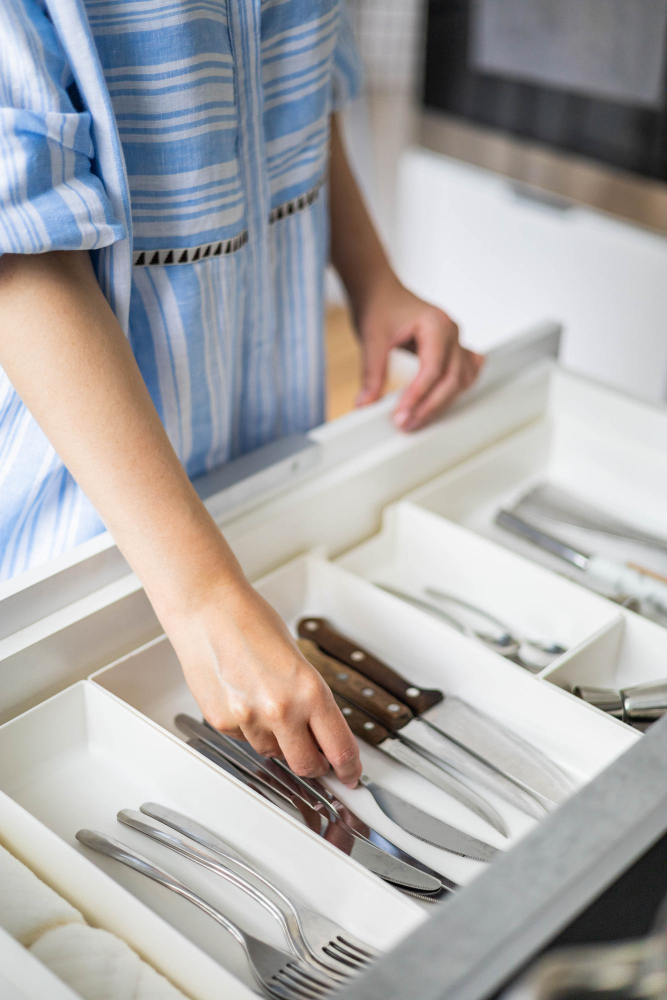
You don’t want to pack every knife you own, especially if some of them are dull or damaged. Start by selecting only the knives that you use regularly and that are in good condition.
Consider which types of knives will be most useful during your trip or move. If you’re going camping, for example, a sturdy chef’s knife and a paring knife might be all you need.
On the other hand, if you’re moving across country and plan on cooking meals along the way, consider bringing additional specialty knives like bread or carving knives.
Remember: quality over quantity! It’s better to have a few high-quality kitchen tools than an entire set of low-quality ones that won’t last long-term.
Organizing Your Knife Collection
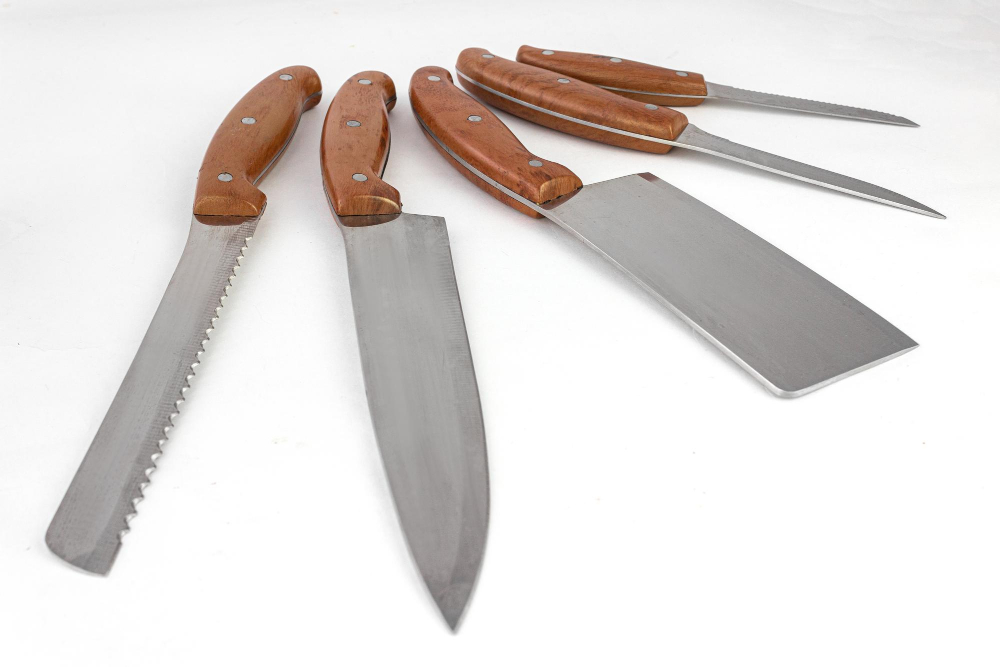
This step will help you identify which knives you need and how many of them require packing. It also ensures that each knife is in good condition before storage or transportation.
Start by sorting your collection into categories such as chef’s knives, paring knives, bread knives, etc. Then arrange the blades according to size and shape within each category.
If you have a large knife collection with multiple sets of similar-looking blades, consider labeling the handles or sheaths for easy identification during unpacking.
Knife Safety Measures
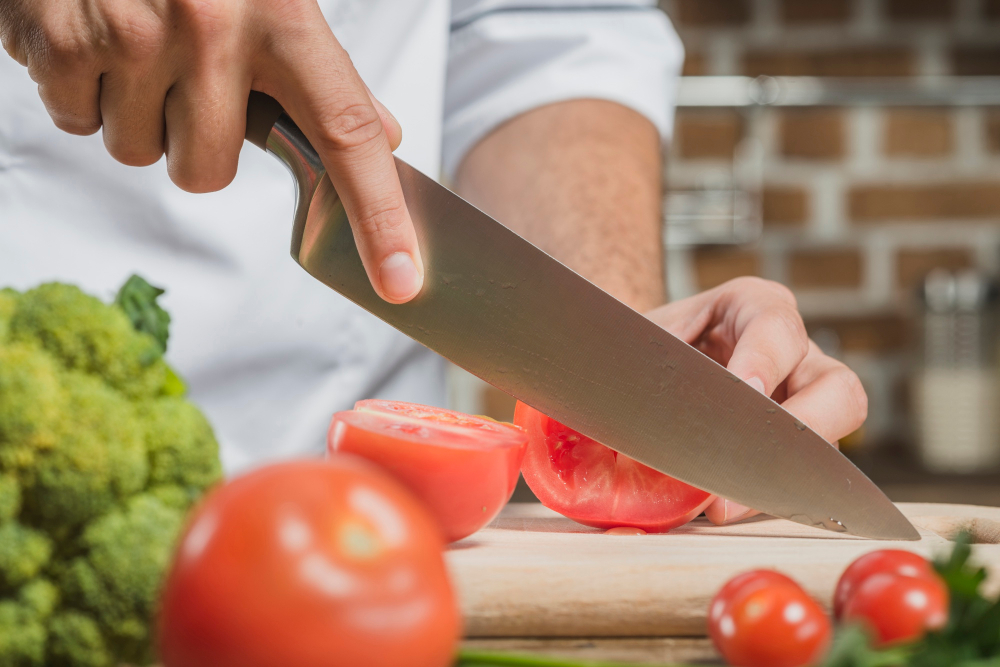
First and foremost, make sure that the blades are clean and dry before handling them. Wet or dirty blades can slip out of your hand easily, causing injury.
When handling sharp knives, always keep your fingers away from the blade’s edge. Use a firm grip on the handle while cutting or slicing food items.
It is also crucial to store knives in a safe place where children cannot reach them. If you have young kids at home, consider using childproof locks on drawers or cabinets where you store sharp objects like kitchen knives.
Prepare Knives for Packing
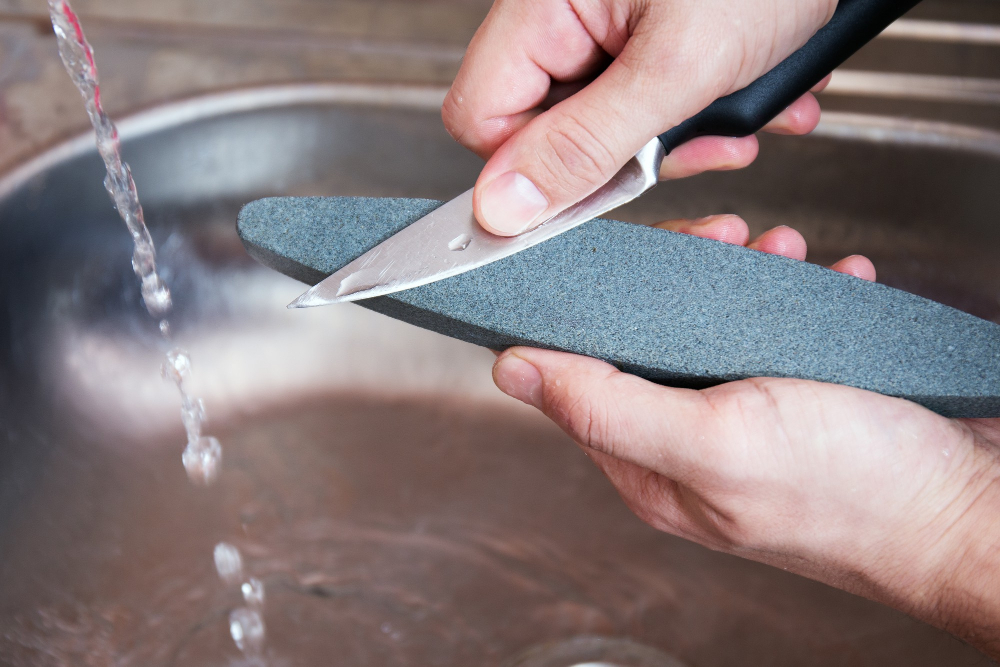
Start by cleaning each knife with warm soapy water and drying them thoroughly. Make sure there is no moisture left on the blades as this can cause rusting during storage or transportation.
Next, inspect each blade for any nicks or chips that may have occurred during use. If you find any damage, consider having a professional sharpen and repair the blade before packing it away.
Once your knives are clean and inspected, protect their sharp edges by covering them with cardboard sleeves or plastic guards specifically designed for knives. Alternatively, wrap each knife in a soft cloth such as a dish towel to prevent scratches on the blades.
Choose the Right Packing Materials
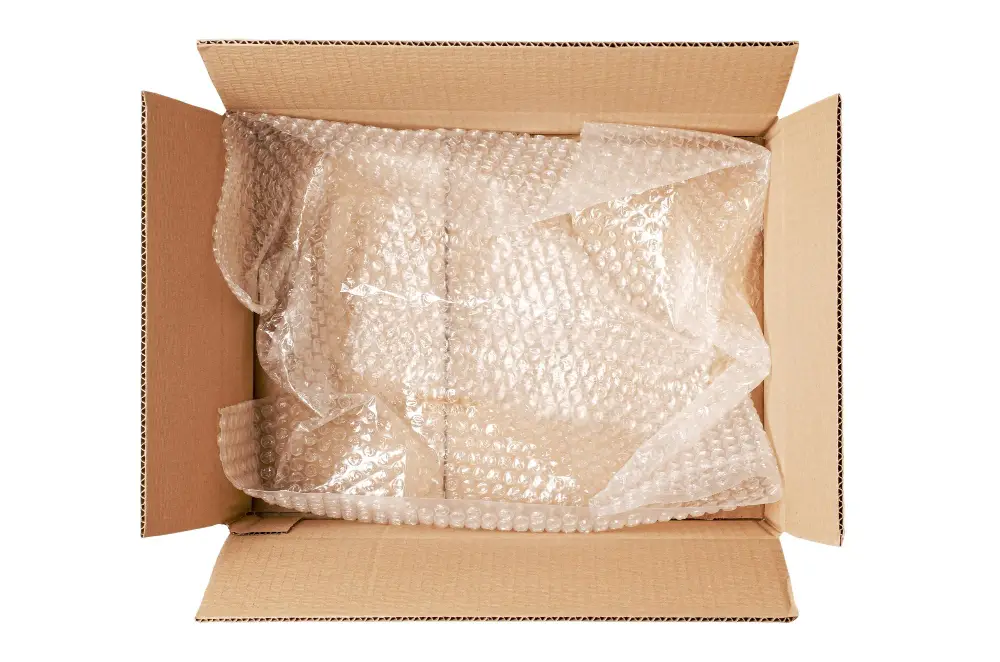
You want to ensure that your knives are protected from damage during transportation or storage. Here are some of the best packing materials for keeping your knives safe:
1. Bubble wrap: This is a great option for protecting individual knives and preventing them from scratching against each other.
2. Packing paper: If you don’t have bubble wrap on hand, wrapping each knife in packing paper can also provide adequate protection.
3. Towels or cloth napkins: Wrapping your knives in towels or cloth napkins not only protects them but also helps prevent any moisture buildup that could cause rusting.
4. Knife guards/covers/sheaths: Many knife sets come with their own protective covers, which can be used during transport and storage.
5. Cardboard sleeves/knife rolls/boxes: These options offer additional protection by keeping all of your blades together and secure while minimizing movement inside the box.
Gather Your Packing Supplies
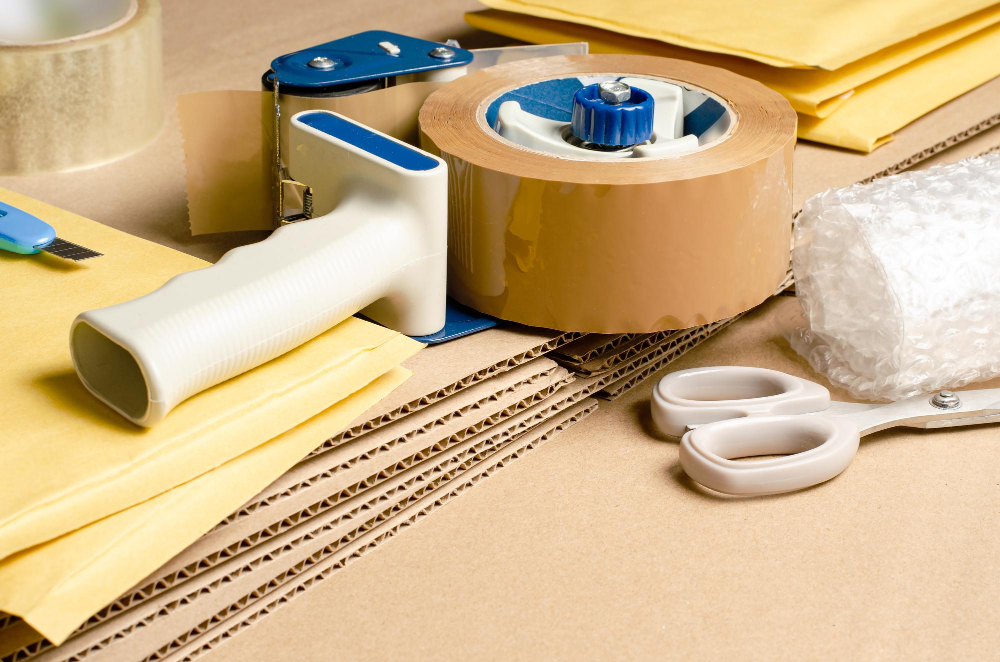
You don’t want to be caught without the right materials halfway through packing. Here are some essential items you’ll need:
1. Packing tape: Use strong and durable tape that can withstand pressure and keep your box sealed.
2. Bubble wrap: This will provide cushioning for your knives during transportation.
3. Towels or cloth napkins: Wrap each knife in a towel or cloth napkin before placing them in a box.
4. Cardboard sleeves or sheaths: These are great options if you’re transporting individual knives separately from one another.
5. Knife blocks, rolls, or cases: If you have multiple knives, consider using these storage solutions to keep them organized and secure during transport.
Blade Edge Protection
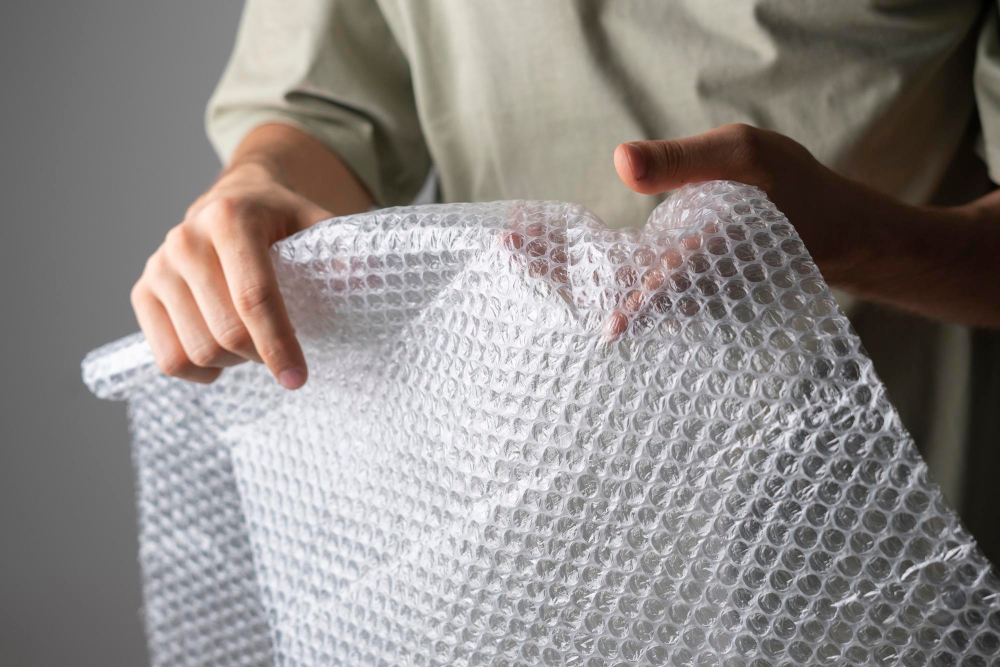
The sharpness of the blades can be easily damaged during transportation, which can make them dull and less effective in the future. To avoid this, you need to use proper protection for each knife.
One way to protect your knife’s edge is by using a cardboard sleeve or plastic cover that fits snugly over it. These sleeves are designed specifically for knives and will keep them safe from any accidental bumps or scratches.
Another option is wrapping each individual knife with bubble wrap before placing it in a box. This provides an extra layer of cushioning around the blade edge while also keeping it secure during transport.
Using Knife Guards and Covers
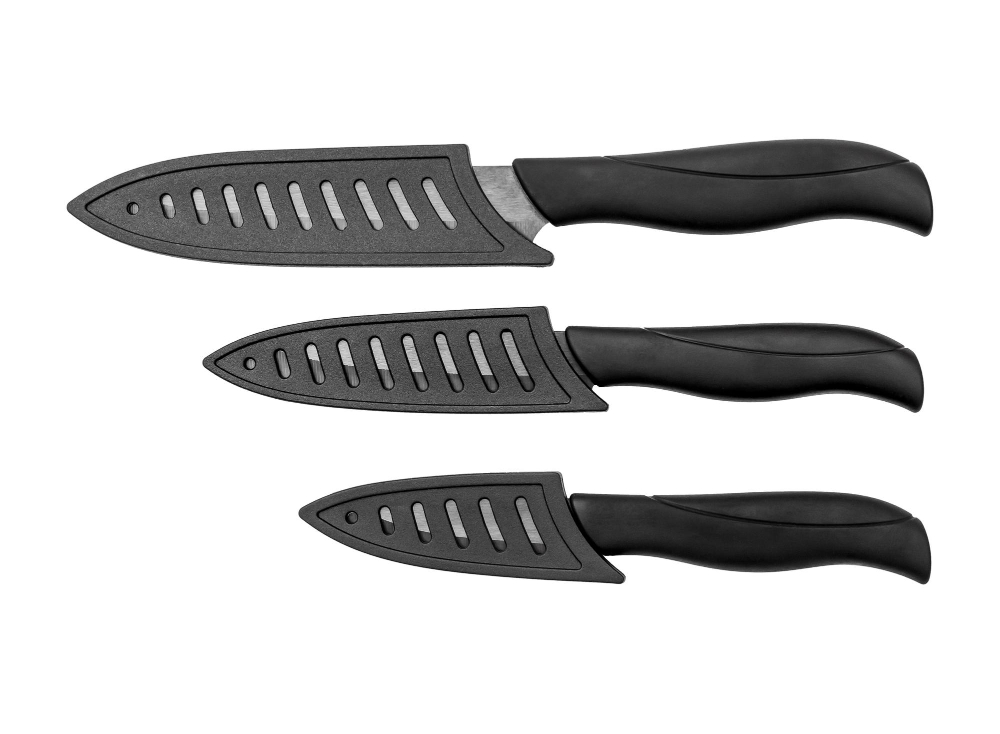
These are specially designed sleeves that fit over the blade, protecting it from damage and preventing any accidental cuts.
Knife guards come in different sizes, so make sure you choose one that fits your knife snugly. They are usually made of plastic or silicone material which makes them durable and easy to clean.
To use a knife guard, simply slide it over the blade until it covers the entire length. Some models have a locking mechanism that keeps them securely in place while others rely on friction to stay put.
If you don’t have access to a dedicated knife guard for each of your knives, you can also use cardboard sleeves as an alternative solution. Simply cut out pieces of cardboard slightly larger than each blade’s size and wrap them around before packing into boxes.
Wrapping Knives in Towels
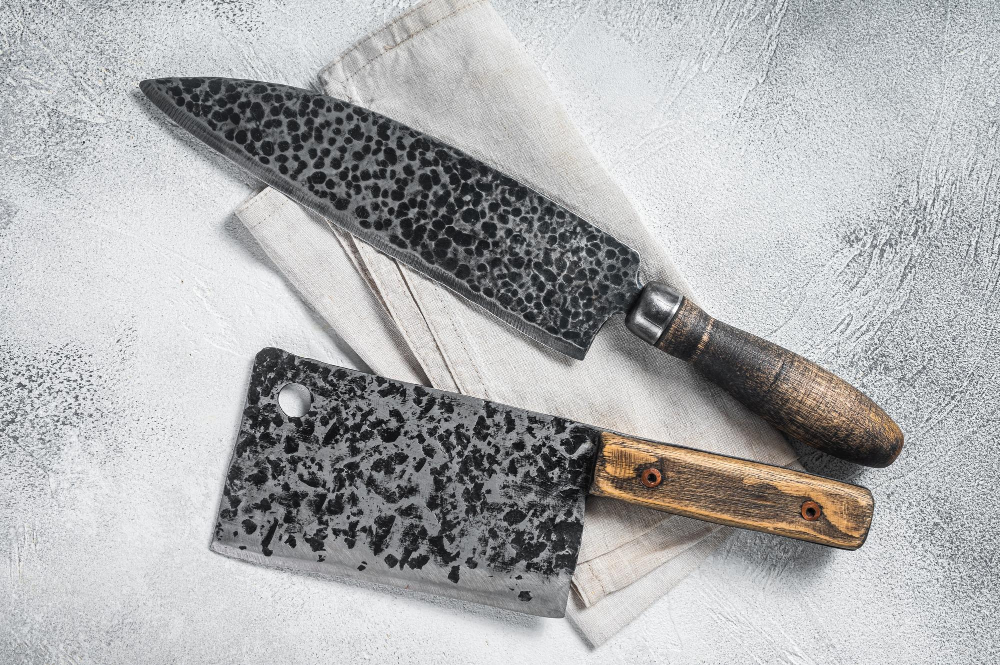
This method provides excellent cushioning for your blades, preventing any damage during transportation or storage.
To wrap your knives, start by laying a clean towel on a flat surface. Place the knife horizontally at one end of the towel with its blade facing away from you.
Fold over one side of the towel so that it covers half of the blade lengthwise.
Next, fold over another section of the towel to cover both sides completely and tuck any excess fabric into each side’s opening. Roll up tightly around each knife until it is fully covered.
Repeat this process for all other knives you want to pack using towels as protection before placing them inside a sturdy box lined with packing material such as bubble wrap or foam peanuts.
Storing Knives in Sheaths
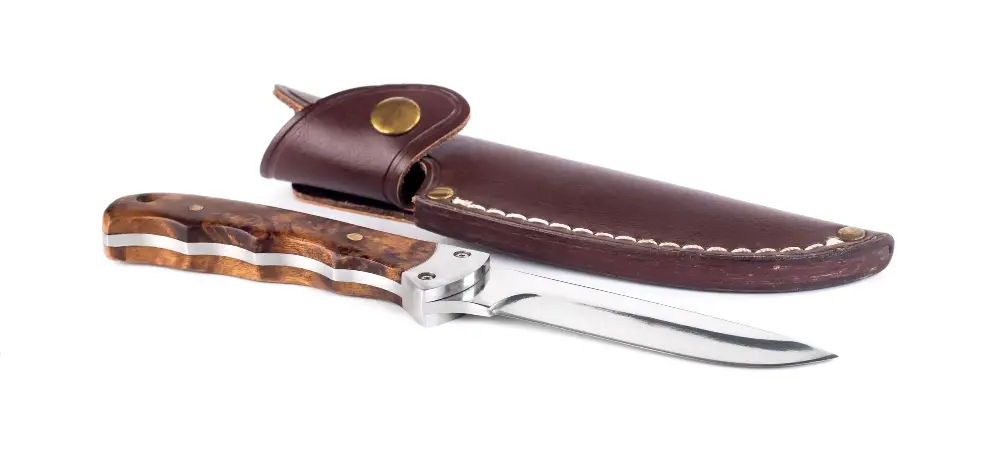
Simply slide each knife into its respective sheath and store them in a drawer or on a magnetic strip. Make sure the blades are facing downwards to avoid any accidental cuts when reaching for the knives.
Sheaths come in different materials such as leather, plastic, or nylon. Leather is an excellent choice for protecting your knives from scratches and moisture while adding an elegant touch to your kitchen decor.
However, if you don’t have individual sheaths for each knife but still want to protect them during storage or transportation, consider using blade guards instead. Blade guards are made of plastic and can be easily slipped over the blade edge before placing it inside a box or bag.
Cardboard Sleeves for Knives
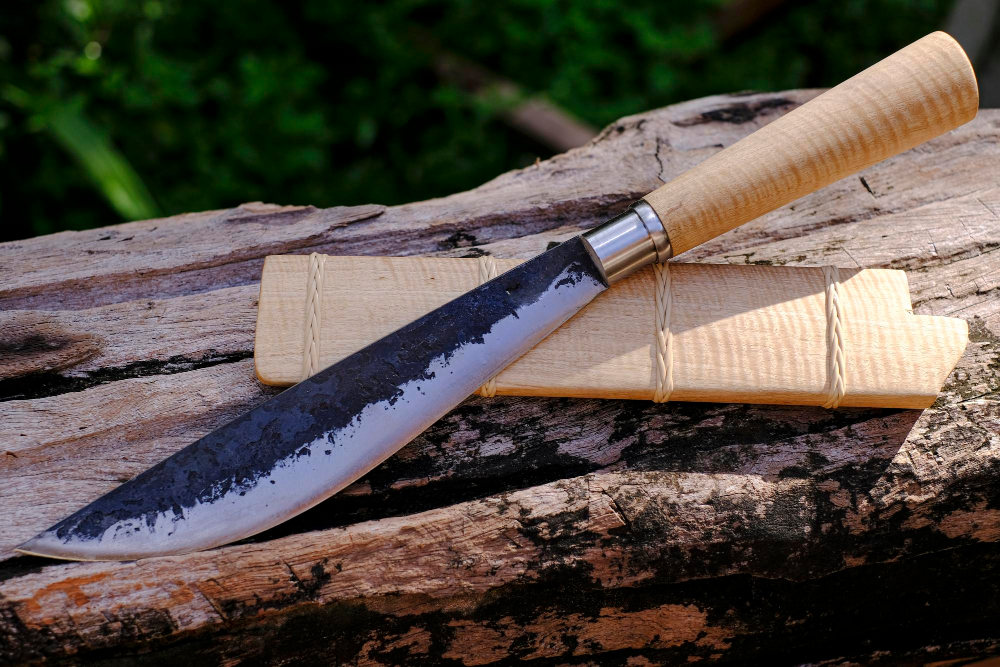
They provide adequate protection and prevent the blades from getting damaged during transportation.
To make a cardboard sleeve, cut out two pieces of cardboard that are slightly longer than your knife blade. Place one piece on top of the other and fold them in half lengthwise.
Then, place your knife inside the folded sleeve so that it’s centered between both halves of the cardboard.
Next, use tape to secure both ends of the sleeve shut. Make sure there is no wiggle room inside once you’ve taped it up tightly.
While this method may not be as secure as using individual sheaths or rolls for each knife, it can still offer enough protection if done correctly and used with care during transport.
Using Knife Rolls
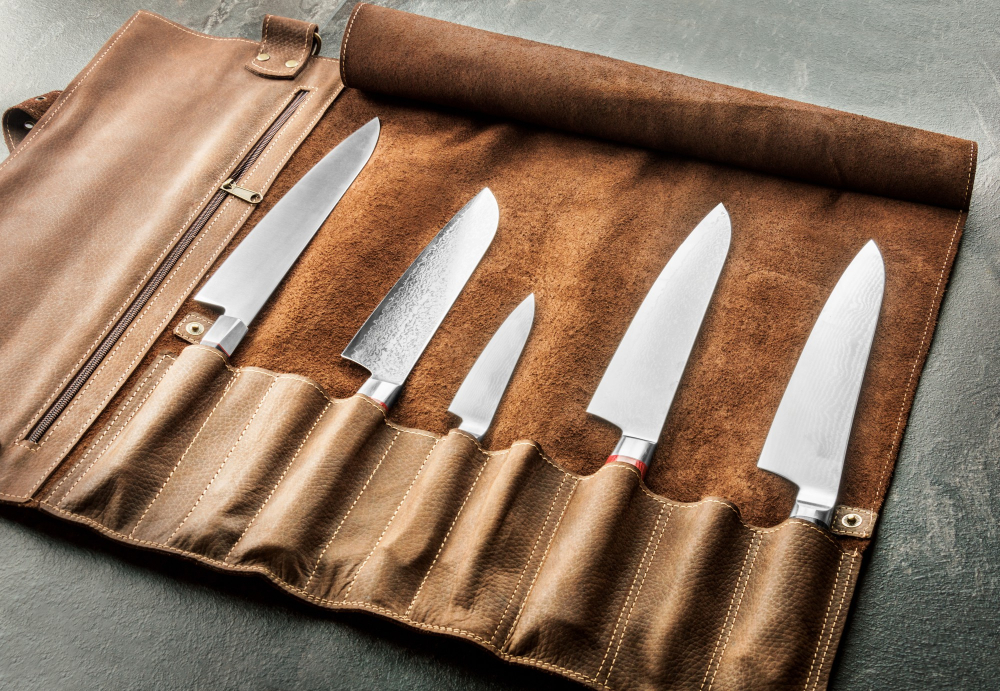
A knife roll is essentially a compact carrying case that allows you to store multiple knives in one place. It’s perfect for chefs who need to bring their own tools when working off-site or home cooks who want an easy way to transport their favorite kitchen knives.
To use a knife roll, simply slide each of your knives into the designated slots or pockets within the roll. Make sure that each blade is fully covered by the material of the slot or pocket so it doesn’t come into contact with other blades during transportation.
Knife rolls are available in various sizes and materials such as leather, canvas, nylon etc., so choose one according to your needs and preferences. They can be easily rolled up like any other bag after packing all of your essential kitchen tools inside them.
Packing Knife Blocks
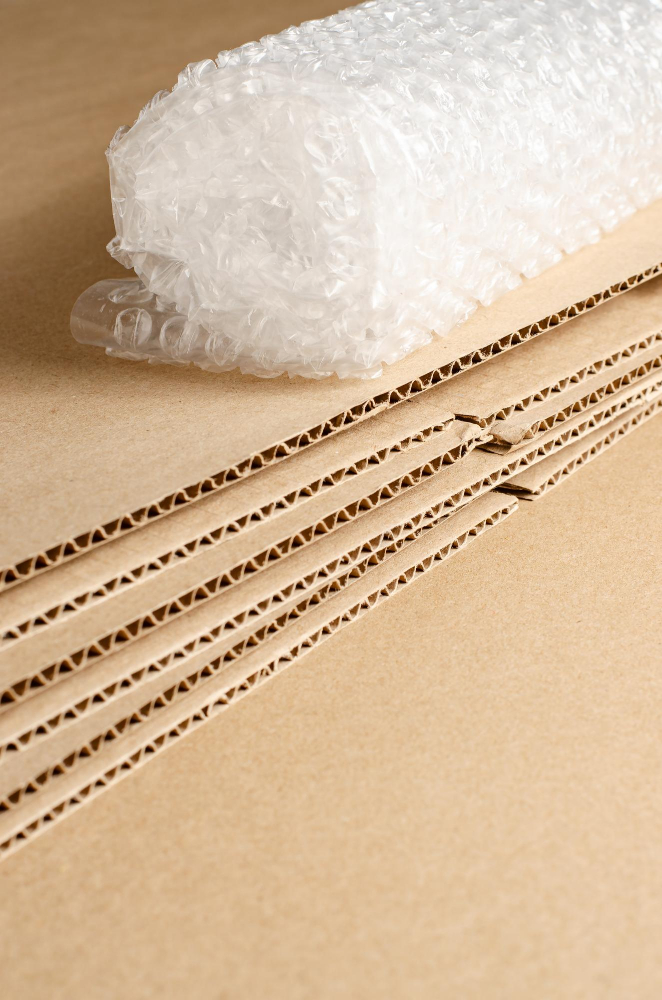
Simply remove the knives from the block and wrap them individually using any of the methods mentioned above. Then, pack each wrapped knife back into its designated slot in the block.
Make sure to secure any loose handles with rubber bands or tape to prevent them from moving around during transport. Once all of your knives are securely packed in their slots, wrap the entire knife block with bubble wrap and tape it shut.
Labeling is also important when packing a knife block so that you can easily identify it among other boxes during unpacking. Write “Kitchen Knives” on one side of the box and “Fragile” on another side to ensure proper handling by movers or anyone who may be helping you move.
Bubble Wrap and Tape
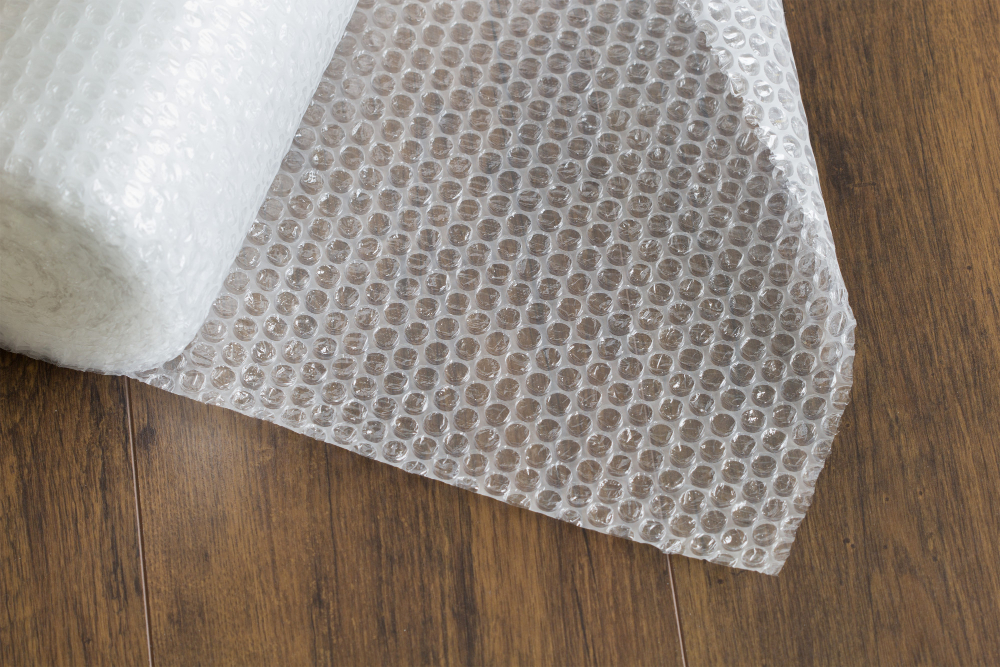
Bubble wrap is a great option for this step. It provides cushioning and prevents the blades from rubbing against each other during transportation.
To use bubble wrap, simply cut a piece that is long enough to cover the entire knife with some overlap on both sides. Place the knife in the center of the bubble wrap and fold one side over it, then fold over the other side so that they overlap slightly.
Next, secure both ends with tape to keep everything in place. Be sure not to tape directly onto any part of your blade as this can leave residue or damage its finish.
Repeat these steps for all your knives until they are securely wrapped up like little presents ready for transport!
Secure Loose Individual Knives
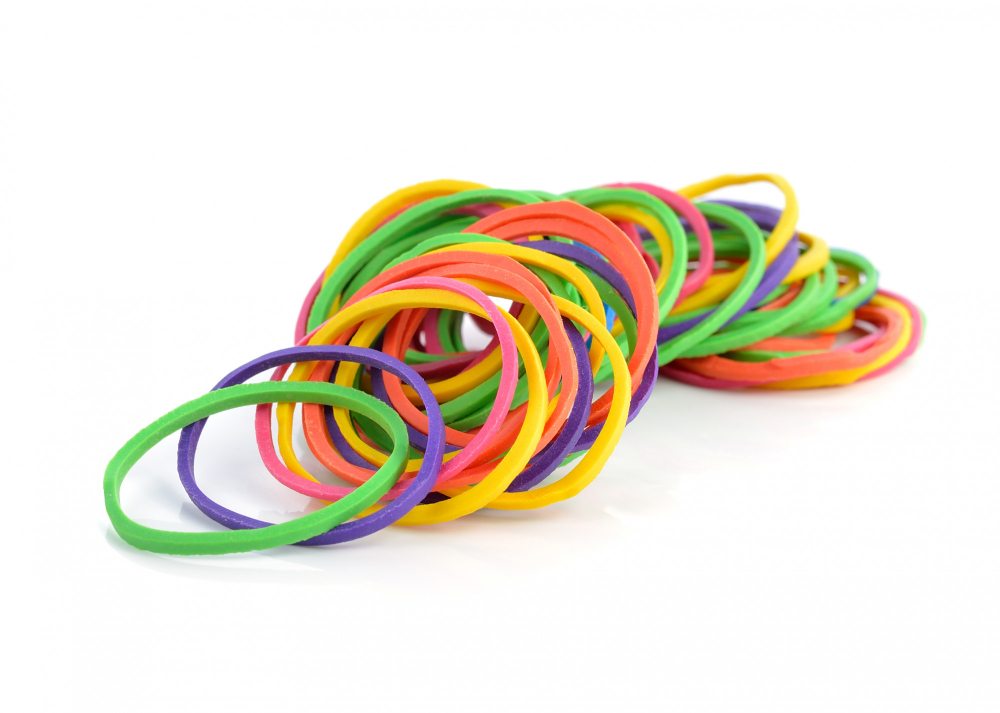
Loose knives can damage each other or even cause injury if not properly secured. One way to keep your knives in place is by using a rubber band or twist tie to hold the blade against the handle.
This will prevent any movement and protect both the blade and handle from scratches.
Another option is wrapping each knife individually with bubble wrap before securing them together with tape or a rubber band. This method provides extra cushioning for your blades while also keeping them tightly packed together.
Remember, when packing loose individual knives, always prioritize safety first! Take extra care when handling sharp objects and make sure they are securely packed before transporting them anywhere.
Place Knives in a Sturdy Box
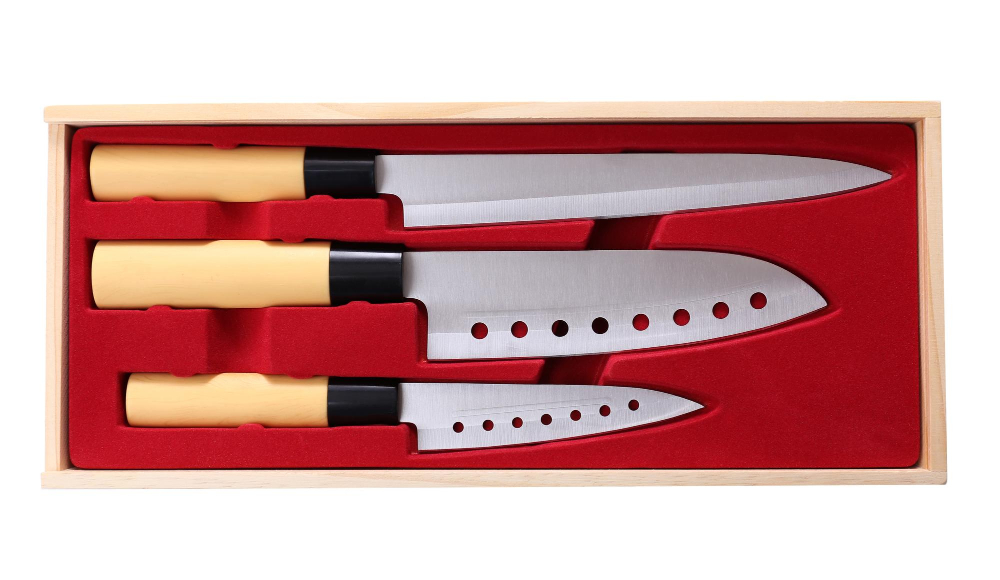
A cardboard box is the most common option for packing kitchen knives. Make sure that the size of the box is appropriate for your knife collection and that there is enough space to add extra padding materials.
When placing your knives in a box, make sure they are arranged carefully so they don’t bump into each other during transportation. You can use foam inserts or crumpled paper as additional cushioning between each knife.
It’s important to label the outside of the box with “Fragile” or “Sharp Objects” warnings so that anyone handling it knows what’s inside and takes extra care when moving it around.
Remember, safety should always come first when packing sharp objects like kitchen knives.
Label the Box Clearly
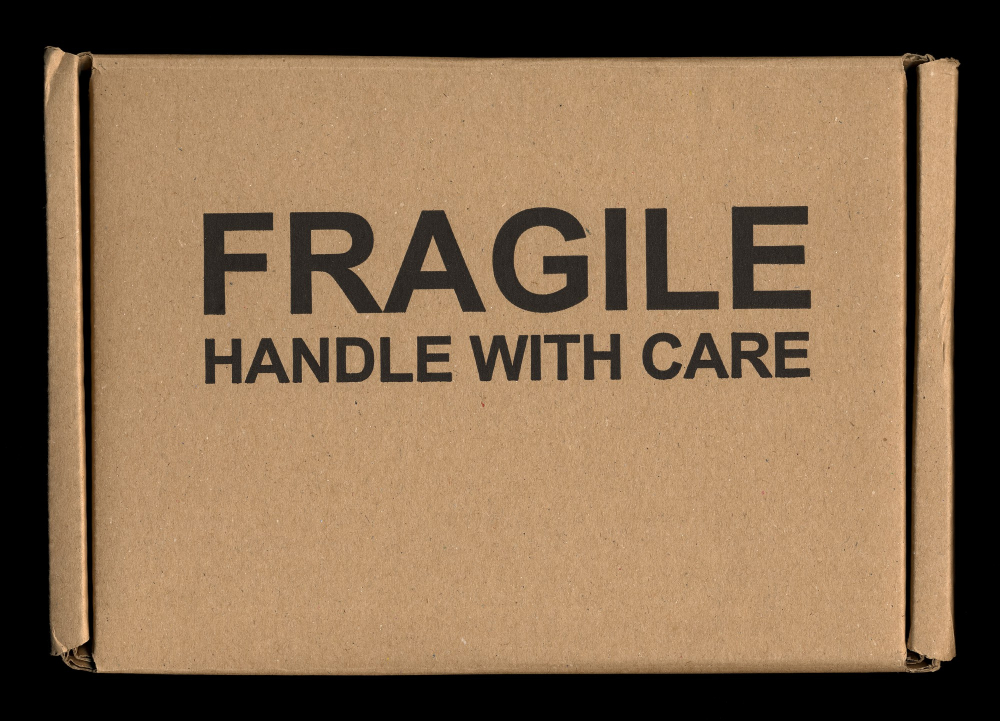
This will help ensure that anyone handling the box knows what is inside and can take extra care when moving or storing it. Use a permanent marker to write “Kitchen Knives” on all sides of the box in large, bold letters.
Consider adding a warning label such as “Sharp Objects” or “Handle with Care.” This will alert anyone who comes into contact with the package that there are sharp objects inside.
Proper labeling not only helps protect your knives but also ensures they are easily identifiable when unpacking. You don’t want to be rummaging through boxes trying to find your favorite knife!
By following these simple steps for packing and labeling your kitchen knives, you can rest assured that they will arrive at their destination safe and sound.
Secure Knife Transportation
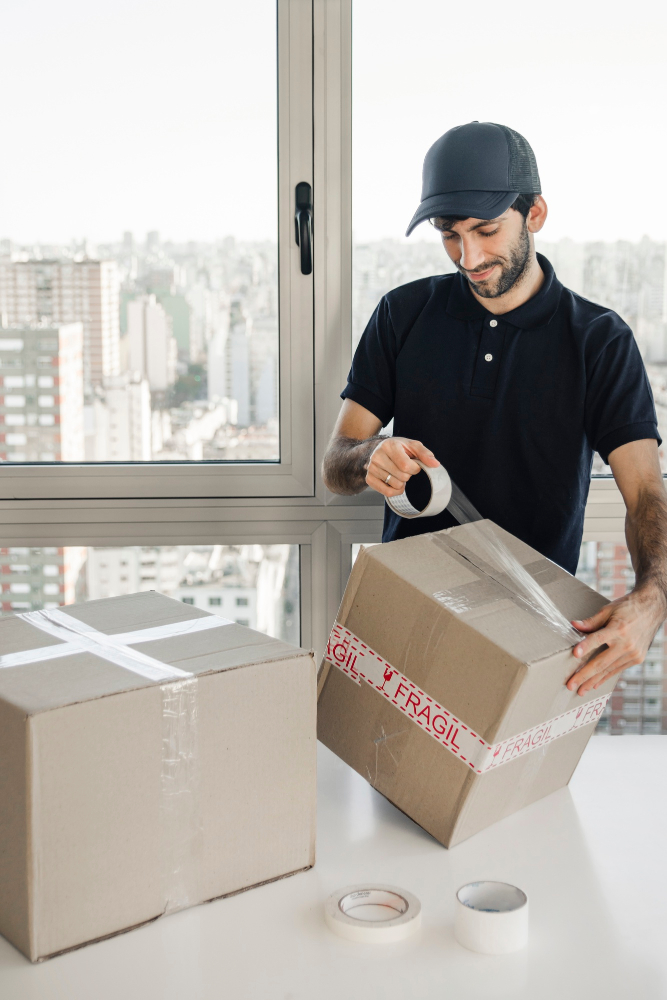
The last thing you want is for them to shift around during transportation and damage other items or cause injury. To secure your knife box, use packing tape to seal all edges of the box tightly.
When loading the knife box into a vehicle, make sure it is placed in an upright position and secured with straps or bungee cords so that it doesn’t move around while driving. If possible, keep the knife box on a flat surface rather than stacking anything on top of it.
If you’re traveling by air with your knives, check airline regulations before packing them in checked luggage as some airlines may not allow sharp objects onboard at all. It’s best to pack them securely in their own separate container within checked baggage and label appropriately.
Unpacking and Setup
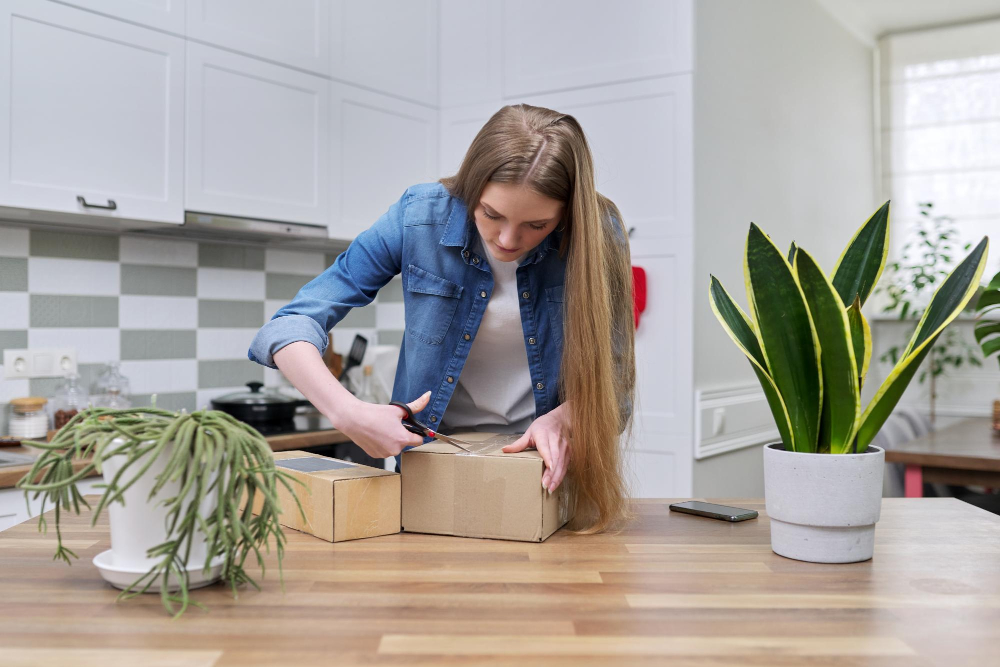
Carefully remove the box from transportation and place it on a flat surface. Use scissors or a knife to cut through the tape securing the box.
Take each knife out of its protective covering one by one, checking for any damage that may have occurred during transit. If there is any damage, take note of it immediately so you can address it later.
After all knives are accounted for and inspected, wash them with warm water and soap before using them again in your kitchen. Make sure they are completely dry before storing them away in their designated spot.
If you’re moving into a new home or rearranging your current space, consider investing in an appropriate storage solution for your knives such as magnetic strips or blocks that keep blades safely stored while also being easily accessible when needed.
Knife Maintenance Tips
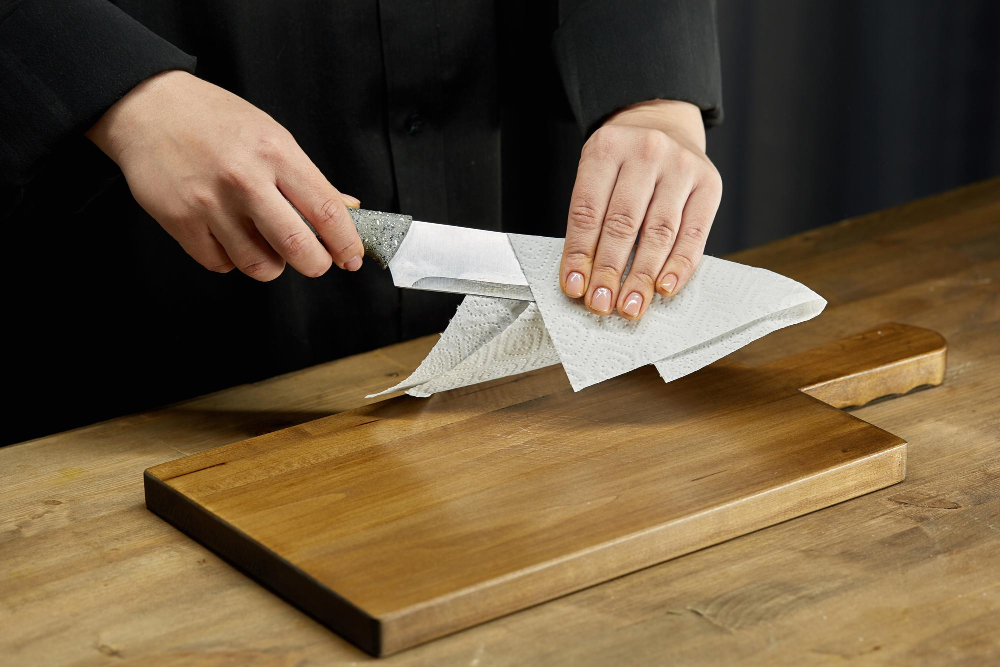
Proper maintenance will ensure that your knives remain sharp and in good condition for years to come. Here are some knife maintenance tips:
- Clean the blades after each use with warm water and mild soap.
- Dry the blades thoroughly before storing them.
- Sharpen the blades regularly using a sharpening stone or honing rod.
- Store knives in a dry place away from moisture and humidity.
- Avoid putting knives in the dishwasher as this can damage their edges.
By following these simple knife maintenance tips, you’ll be able to keep your kitchen knives sharp, safe, and ready for action whenever you need them!
FAQ
How do you store knives when packing?
When packing, store knives by sorting them into categories, covering them if possible, laying them on 2-3 layers of packing paper with 1-2 inches between each, and wrapping them securely.
Can you store knives loose in a drawer with other utensils?
No, storing knives loose in a drawer with other utensils is not advisable, as it is dangerous and can potentially dull the blades by exposing them to other tools and items in the drawer.
How do chefs transport knives?
Chefs transport knives using knife wallets and roll bags, which have compartments for different sized and shaped knives and can be rolled or folded for easier carrying.
How should kitchen knives be stored?
Kitchen knives should be stored in a drawer block or a magnetic strip, while considering the proximity to the food preparation area to avoid attracting food splatters.
What are the best knife protectors to use while packing and moving?
The best knife protectors to use while packing and moving are blade guards, sheaths, or edge protectors.
Are there specific storage containers or bags designed for safely packing kitchen knives?
Yes, there are specific storage containers or bags, such as knife rolls and blade guards, designed for safely packing kitchen knives.
How can you safely pack and transport knife sets with knife blocks?
To safely pack and transport knife sets with knife blocks, ensure the knives are secured in the block and wrap the entire block in bubble wrap or packing material before placing it in a box.




